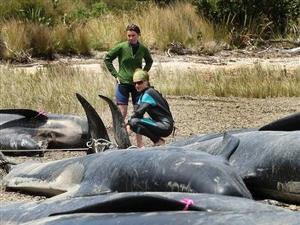VIRGINIA A driver accused of cruelty to animals and in a fine of USD 100 . He was caught carrying a goat in the trunk of his car.Deputy sheriff kote Bedford, Virginia, United States (U.S.) found bound and the goat in the trunk of a car owned by Fiona Ann Enderby. When checked, it turns out she was also drunk driving. Thus reported the Associated Press, Sunday (22/08/2010).When asked the police, the woman was declared if the goats he bought from a farmer who will be given to someone else. We found the goat looked out of breath. When measured, the air in the trunk temparatur is approximately 94 degrees centigrade.
Posts Tagged ‘Biology’
driver accused of cruelty to animals and in a fine of USD 100 . He was caught carrying a goat in the trunk of his car
Posted: August 22, 2010 in WoWTags: Associated Press, Bedford, Bedford,Virginia,United States, Biology, Culture, Deputy sheriff, driver, farmer, Fiona Ann Enderby, Goat, Human Interest, Law_Crime, Livestock, Meat, Trunk, United States, USD, Virginia, Virginia,United States, Zoology
more than 60 whales were found dead on the Beach Kaitaia in New Zealand
Posted: August 21, 2010 in most wanted terrorists and criminalsTags: Beached whale, Biology, Carolyn Smith, Cetaceans, Disaster_Accident, Environment, Fauna of Asia, Killer Whale, Megafauna, New Zealand, New Zealand Ministry of Nature Protection, Oceanic dolphins, Pilot whale, Whale, Zoology
60 whales died on a beach in New Zealand. Whale that died after it beached.This was disclosed by Carolyn Smith of the New Zealand Ministry of Nature Protection. Carolyn announced that more than 60 whales were found dead on the Beach Kaitaia in New Zealand. Whales can not be saved because rescuers could not save enough time for the whales.
Carolyn guessed it before the fish were stranded at first. He was stranded due to make sure they can not survive. Similarly as reported from all voices, Saturday, August 21, 2010.Carolyn adds there are actually about 73 whales that were stranded but there are some among the fish who saved themselves by returning to the sea.Ministry of Nature Protection explained the type of pilot whales were stranded since Thursday night.
Some volunteers are trying hard to restore the large fish in the sea. But, not easy to do so.whale on the beach of New Zealand is not this just happened the first time only. Last December, about 100 whale also beached in the country and then they can not survive presumed dead.
Cold weather interfere Heart Patients
Posted: August 12, 2010 in health newsTags: Aging-associated diseases, Anatomy, Biology, British Heart Foundation, Cardiovascular diseases, Celsius, congenital heart disease, Health_Medical_Pharma, Heart, heart attack, heart attacks, heart disease, Khrishnan Bhaskaran, LONDON, London,Greater London,United Kingdom, Medical emergencies, Medicine, Myocardial infarction, the Britsh Medical Journal, the Guardian, United Kingdom, Wales
LONDON very cold temperatures expected rise in blood pressure can lead to the heart and cause heart attacks.Based on a study in the Britsh Medical Journal, as quoted from the Guardian, Thursday (08/12/2010), one degree Celsius temperature drop associated with 200 more people who suffered a heart attack at 28 the next day
More people tend to have a heart attack during the winter. Extremely cold weather. People aged between 75-84 and who have congenital heart disease are people who are vulnerable and should get a warning when the temperature is decreased.Each year, approximately 141 000 people in the UK suffered a heart attack, 86 000 of whom died, which is one of the three of them died before reaching hospital.Khrishnan Bhaskaran, who led the study, if the cold temperatures in the UK that a lot of people having a heart attack.
He and his colleagues studied records of 84 010 patients with heart disease in 15 places in England and Wales during the years 2003-2006, found that the chill factor temperature is one of the causes, plus also the factor of air pollution.The British Heart Foundation said that research showed that the risk of heart attack during the winter, deserves attention.
Dick Cheney has been out of the hospital
Posted: August 10, 2010 in breaking newsTags: Aging-associated diseases, Anatomy, Biology, Cardiology, Cardiovascular diseases, chronic heart disease, Dick Cheney, George Washington University, Health_Medical_Pharma, heart attack, Heart failure, Inova Fairfax Hospital, Medical emergencies, Medicine, Myocardial infarction, Vice President, Washington
WASHINGTON Former Vice President Dick Cheney (69), as is rumored, has been out of the hospital, Monday, after a month and then get a new heart pump.”We go through the effort of healing at home, he and his family express gratitude for adequate care given by medical staff at Inova Fairfax Hospital and George Washington University,” said a statement from his office.They are also grateful for the support of many people who have to write to and pray for healing for Cheney.
Cheney himself claimed to have suffered a heart attack and five times in mid-July and then he decided to install the equipment because of suffering from heart failure due to the rising pressure.He put on the supporting tools that are useful for left ventricular pump function of heart and is usually only given in patients with chronic heart disease.(AFP)
Cocoa-rich dark chocolate could be prescribed for people with liver cirrhosis in future
Posted: May 1, 2010 in health newsTags: alcohol abuse, Anatomy, Biology, chemicals, Chocolate, Cirrhosis, Cocoa, end-stage liver disease, European Association for the Study of the Liver in Vienna, Gastroenterology, Health_Medical_Pharma, hepatitis infection, Hepatology, Hot chocolate, Liver, liver cirrhosis, LONDON, London's Imperial College, London,Greater London,United Kingdom, Mark Thursz, Medicine, Portal hypertension, professor of hepatology, Types of chocolate
 LONDON Cocoa-rich dark chocolate could be prescribed for people with liver cirrhosis in future, following the latest research to show potential health benefits of chocolate.Spanish researchers said Thursday that eating dark chocolate capped the usual after-meal rise in abdominal blood pressure, which can reach dangerous levels in cirrhotic patients and, in severe cases, lead to blood vessel rupture.
LONDON Cocoa-rich dark chocolate could be prescribed for people with liver cirrhosis in future, following the latest research to show potential health benefits of chocolate.Spanish researchers said Thursday that eating dark chocolate capped the usual after-meal rise in abdominal blood pressure, which can reach dangerous levels in cirrhotic patients and, in severe cases, lead to blood vessel rupture.
Antioxidants called flavanols found in cocoa are believed to be the reason why chocolate is good for blood pressure because the chemicals help the smooth muscle cells of the blood vessels to relax and widen.A study of 21 patients with end-stage liver disease found those given a meal containing 85 percent-cocoa dark chocolate had a markedly smaller rise in blood pressure in the liver, or portal hypertension, than those given white chocolate.
“This study shows a clear association between eating dark chocolate and (lower) portal hypertension and demonstrates the potential importance of improvements in the management of cirrhotic patients,” said Mark Thursz, a professor of hepatology at London’s Imperial College.The results were presented at the annual meeting of the European Association for the Study of the Liver in Vienna and follow a number of earlier scientific studies suggesting that dark chocolate also promotes heart health.Cirrhosis is scarring of the liver as a result of long-term damage. It is caused by various factors, including hepatitis infection and alcohol abuse.(Reuters)
Netherlands A global group funding the battle against AIDS, malaria and tuberculosis in impoverished nations worldwide
Posted: March 24, 2010 in hiv/aidsTags: Biology, Business_Finance, executive director, Global Fund, Global health, Health, International nongovernmental organizations, malaria, Medicine, Michel Kazatchkine, Netherlands, The Associated Press, The Global Fund to Fight AIDS, THE HAGUE, The Hague,South Holland,Netherlands, The Netherlands, tuberculosis, Tuberculosis and Malaria, U.N. headquarters, United Nations, USD, World Health Organization
THE HAGUE, Netherlands A global group funding the battle against AIDS, malaria and tuberculosis in impoverished nations worldwide is urging donors to keep paying for the fight even as the economic crisis forces budget cuts.
The Global Fund is outlining the lifesaving work it can finance in developing countries from 2011-13 if donors pledge $13 billion, $17 billion or $20 billion.
Pledges will be made at an Oct. 5 conference at U.N. headquarters.The fund’s executive director Michel Kazatchkine told The Associated Press on Wednesday he is “very concerned” that the global economic meltdown could make rich countries scale back their contributions.But he says the fund’s success over the past eight years against the killer diseases makes it clear the effort is saving millions of lives.(AP)

